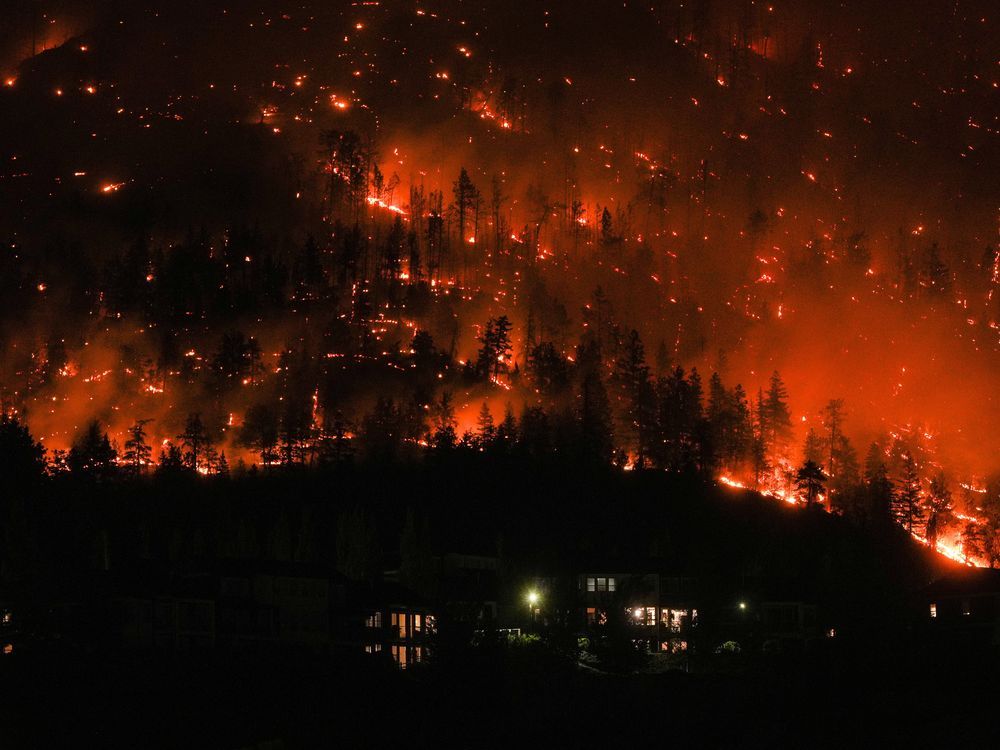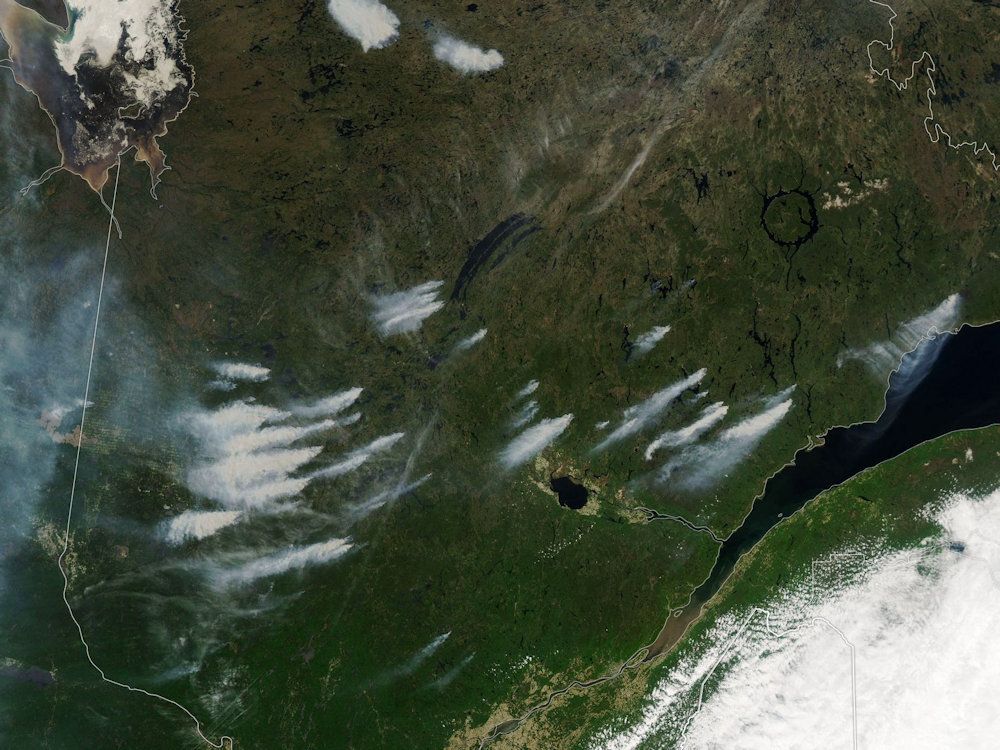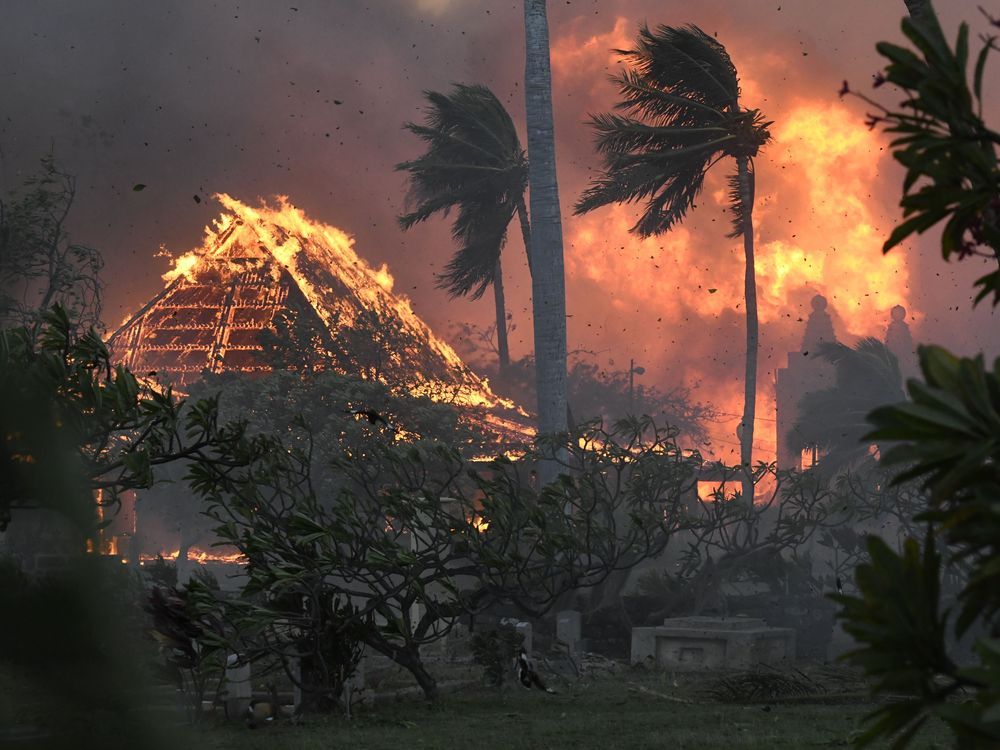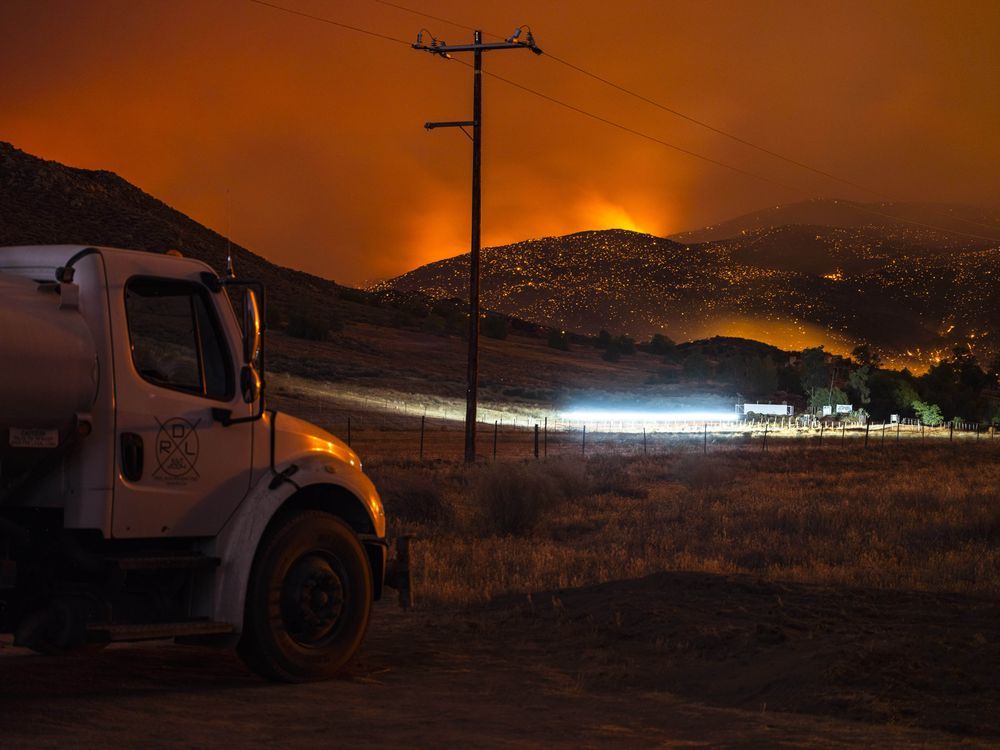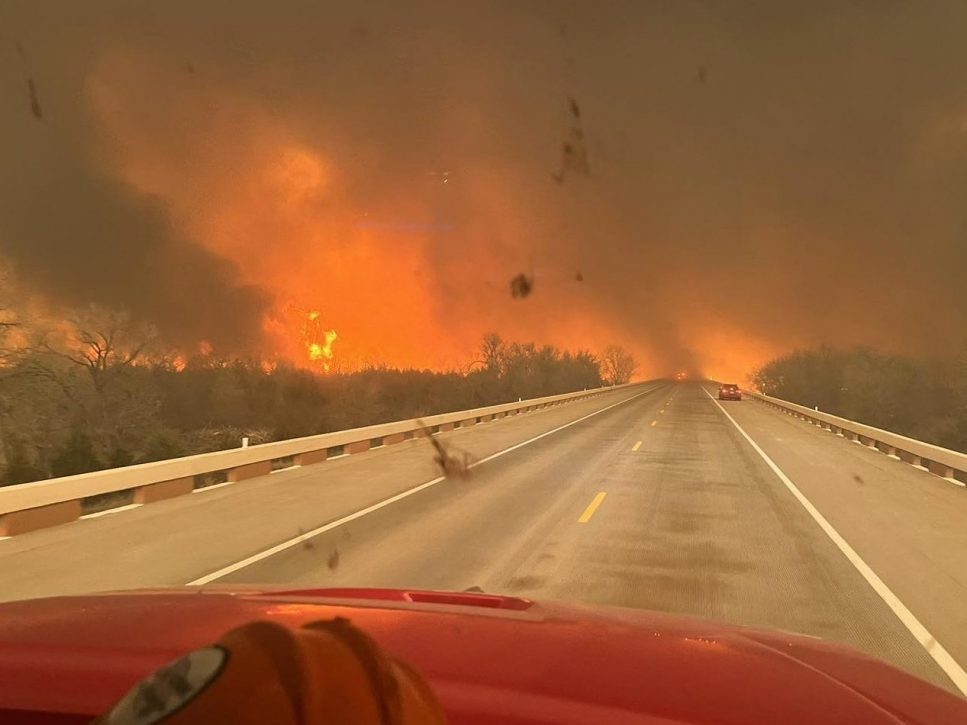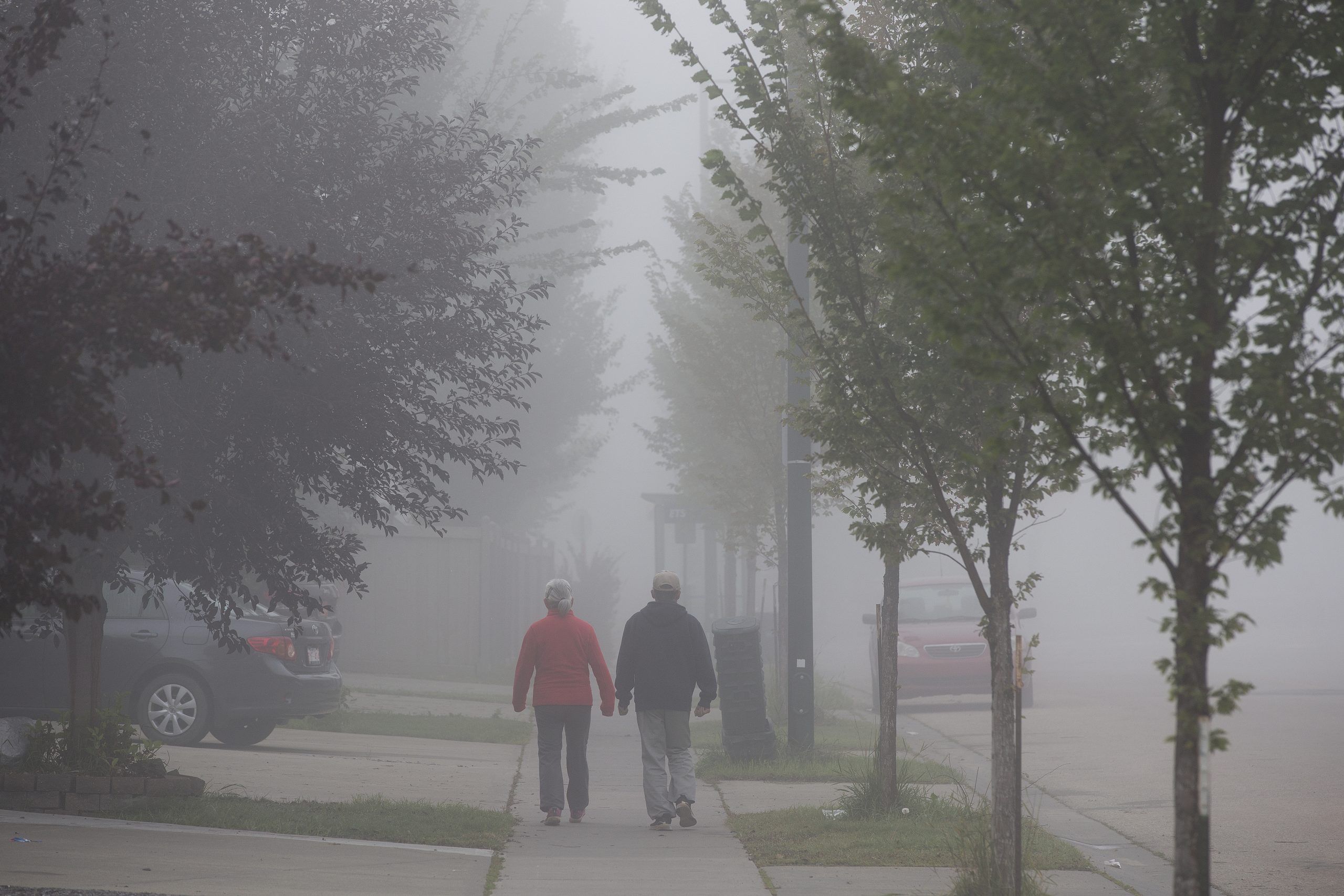Wildfire grows into one of largest in Texas history as flames menace multiple small towns
About 40 homes were burned around the perimeter of the town of Canadian
Author of the article:Associated Press
Associated Press
Sean Murphy and Jim Vertuno
Published Feb 28, 2024 • Last updated 1 day ago • 5 minute read
CANADIAN, Texas — A cluster of wildfires scorched the Texas Panhandle on Wednesday, including a blaze that grew into one of the largest in state history, as flames moved with alarming speed and blackened the landscape across a vast stretch of small towns and cattle ranches.
An 83-year-old grandmother from the tiny town of Stinnett was the lone confirmed fatality. However, authorities have yet to make a thorough search for victims and have warned the damage to some communities is extensive.
Known as the Smokehouse Creek Fire, the largest blaze expanded to more than 3,370 square kilometres and jumped into parts of neighbouring Oklahoma. It is now larger than the state of Rhode Island, and the Texas A&M Forest Service said the flames were only about 3% contained.
“I believe the fire will grow before it gets fully contained,” said Nim Kidd, chief of the Texas Division of Emergency Management.
The largest fire recorded in state history was the 2006 East Amarillo Complex fire, which burned about 1,400 square miles and resulted in 13 deaths.
Walls of flames were pushed by powerful winds while huge plumes of smoke billowed hundreds of feet in the air across the sparsely populated region. The smoke delayed aerial surveillance of the damage in some areas.
“There was one point where we couldn’t see anything,” said Greg Downey, 57, describing his escape as flames bore down on his neighbourhood. “I didn’t think we’d get out of it.”
The woman who died was identified by family members as Joyce Blankenship, a former substitute teacher. Her grandson, Lee Quesada, said he had posted in a community forum wondering if anyone could try and locate her. Quesada said deputies told his uncle on Wednesday that they had found Blankenship’s remains in her burned home.
Quesada said she’d surprise him at times with funny little stories “about her more ornery days.”
“Just talking to her was a joy,” he said, adding that “Joy” was a nickname of hers.
Hemphill County Emergency Management Coordinator Bill Kendall described the charred terrain as being “like a moonscape. … It’s just all gone.”
Kendall said about 40 homes were burned around the perimeter of the town of Canadian, but no buildings were lost inside the community. Kendall also said he saw “hundreds of cattle just dead, laying in the fields.”
Tresea Rankin videotaped her own home in Canadian as it burned.
“Thirty-eight years of memories, that’s what you were thinking,” Rankin said of watching the flames destroy her house. “Two of my kids were married there … But you know, it’s OK, the memories won’t go away.”
The small town of Fritch, north of Amarillo, lost hundreds of homes in a 2014 fire and appeared to be hit hard again. Mayor Tom Ray said Wednesday that an estimated 40-50 homes were destroyed on the southern edge. Ray said natural gas remained shut off for the town of 2,200.
Residents are probably not “prepared for what they’re going to see if they pull into town,” Hutchinson County Emergency Management spokesperson Deidra Thomas said in a social media livestream. She compared the damage to a tornado.
Authorities have not said what ignited the fires, but strong winds, dry grass and unseasonably warm temperatures fed the blazes. Near Borger, a community of about 13,000 people, emergency officials at one point late Tuesday answered questions from panicked residents on Facebook and told them to get ready to leave if they had not already.
“It was like a ring of fire around Borger. There was no way out … all four main roads were closed,” said Adrianna Hill whose home was within about a mile of the fire. She said a wind that blew the fire in the opposite direction “saved our butts.”
Republican Gov. Greg Abbott issued a disaster declaration for 60 counties. The encroaching flames caused the main facility that disassembles America’s nuclear arsenal to pause operations Tuesday night, but it was open for normal work Wednesday.
The weather forecast provided some hope for firefighters — cooler temperatures, less wind and possibly rain on Thursday. However, the situation was dire in some areas Wednesday.
Sustained winds of up to 72 km/h, with gusts of up to 113 km/h, caused the fires that were spreading east to turn south, threatening new areas, forecasters said. But winds calmed down after a cold front came through Tuesday evening, said Peter Vanden Bosch, a meteorologist at the National Weather Service in Amarillo.
Breezy conditions were expected again Friday, and fire-friendly weather could return by the weekend, Vanden Bosch said Wednesday.
Kidd said the weekend forecast and “sheer size and scope” of the blaze are the biggest challenges for firefighters.
“I don’t want the community there to feel a false sense of security that all these fires will not grow anymore,” Kidd said. “This is still a very dynamic situation.”
As evacuation orders mounted Tuesday, county and city officials implored residents to turn on emergency alert services on their cellphones and be ready to leave immediately.
“We got a great response from the community when they were asked to evacuate. They did,” Kidd said. “We believe that saved lives, and we don’t want people going back if the evacuation orders are still in place.”
The Pantex nuclear weapon plant, northeast of Amarillo, evacuated nonessential staff Tuesday night out of an “abundance of caution,” said Laef Pendergraft, a spokesperson for the National Nuclear Security Administration’s production office at Pantex. Firefighters remained in case of an emergency.
Pantex tweeted early Wednesday that the facility was “open for normal day shift operations.”
The Smokehouse Creek Fire spread from Texas into neighbouring Roger Mills County in western Oklahoma, where officials encouraged people in the Durham area to flee. Officials did not know yet how large the fire was in Oklahoma.
The weather service also issued red-flag warnings and fire-danger alerts for several other states through the midsection of the country.
— Vertuno reported from Austin, Texas. Associated Press reporters Ken Miller in Oklahoma City, Lisa Baumann in Bellingham, Washington, and Christopher Weber in Los Angeles contributed to this report.
A fast-moving wildfire burning through the Texas Panhandle grew into the second-largest blaze in state history Wednesday.

torontosun.com

